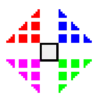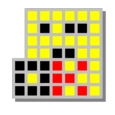Understanding Grafana
Grafana is an open-source data visualization and analytics platform known for its powerful dashboard capabilities. Originally created for developers and system administrators, it has evolved into a universal toolkit for organizations needing accurate and interactive data monitoring.
By connecting directly to popular databases and services—such as Prometheus, InfluxDB, MySQL, PostgreSQL, Graphite, ElasticSearch, Loki, and hundreds more—Grafana enables users to create unified dashboards that display metrics from multiple sources in one place.
The platform is designed to be modular, lightweight, fast, and flexible. It empowers users to build dashboards with precision, making it a preferred tool in DevOps, cloud engineering, product analytics, cybersecurity, IoT, business intelligence, and performance optimization.
Key Features That Make Grafana Stand Out
1. Highly Customizable Dashboards
The core of Grafana lies in its dashboards. Users can:
- Build interactive charts, graphs, and gauges
- Combine multiple visual types for richer insights
- Drag-and-drop panels across the interface
- Personalize layouts for their workflows
Every panel in Grafana can be individually configured, allowing endless creative possibilities for representing data visually. From simple line charts to complex multi-layer monitoring panels, dashboards can be built to accommodate any use case.
2. Wide Data Source Support
Grafana integrates with hundreds of data sources through:
- Native database connections
- Official plugins
- Community-developed plugins
- External web APIs
A few widely used integrations include:
- Prometheus
- InfluxDB
- MySQL, MariaDB, PostgreSQL
- ElasticSearch
- Loki for logs
- CloudWatch, Azure Monitor, Google Cloud
- IoT platforms and hardware systems
With this flexibility, Grafana acts as a single pane of glass, consolidating diverse datasets into a unified, readable format.
3. Real-Time Monitoring and Alerts
Monitoring performance in real time is critical for modern applications and infrastructure. Grafana provides:
- Real-time metric refresh
- Custom alert rules
- Notifications via email, Slack, Teams, PagerDuty, and more
- Alert escalation and grouping
- Automatic anomaly detection (enterprise grade)
These features make Grafana indispensable for monitoring servers, network health, API performance, cloud cost usage, and user activity.
4. Powerful Query Editor
Grafana’s built-in query editor adapts to each data source, making it easier to explore and manipulate data without deep query expertise. Users can:
- Filter data
- Aggregate metrics
- Build time-series queries
- Use visual query builders
- Write raw SQL, PromQL, or Flux queries
This flexibility gives analysts and developers fine-tuned control over how data appears in dashboards.
5. Plugins and Extensions
The plugin ecosystem is one of Grafana’s biggest strengths. It supports:
- Community visualization plugins
- New panel types (heatmaps, radial charts, maps)
- Additional data source connectors
- Custom themes and UI elements
Organizations can even create private plugins tailored to internal workflows.
6. Role-Based Access and Secure Sharing
Security is essential in data visualization. Grafana offers:
- User roles and permissions
- Read-only dashboard sharing
- Team and folder organization
- Encrypted data connections
- Secure dashboard embedding
These access controls ensure that sensitive business metrics stay protected.
7. Cross-Platform Functionality
With support for Windows, MacOS, and Linux, Grafana runs smoothly across diverse environments. The Windows version is optimized to perform reliably on servers, workstations, and cloud-hosted virtual machines.
8. Scalable From Small Teams to Enterprises
From hobby developers to Fortune 500 companies, Grafana scales with ease. It supports:
- Lightweight local installations
- Clustered environments
- Cloud-managed instances
- High-availability setups
Teams can start small and grow their infrastructure naturally without switching tools.
Why Developers and Organizations Prefer Grafana
✓ Open-source and free
Grafana offers powerful features at no cost, with optional upgrades available only if desired.
✓ Community-driven
Thousands of contributors continuously improve the platform.
✓ Ideal for DevOps
Real-time observability is essential in CI/CD pipelines, containerized environments, and cloud-native systems.
✓ Multi-purpose
Grafana is used in countless ways:
- Server monitoring
- Cloud resource visualization
- Application performance analysis
- Business dashboarding
- IoT sensor monitoring
- User analytics
- Database health visualization
- Security event tracking
✓ Easy to deploy
The installation process is simple, making it accessible for beginners and experts alike.
Real-World Use Cases of Grafana
1. Infrastructure and Server Monitoring
Engineers track CPU usage, memory, disk I/O, network traffic, system uptime, and service health in real time.
2. Application Performance Tracking
Developers monitor API responses, request latency, error rates, and throughput metrics.
3. Business Intelligence Dashboards
Teams visualize sales data, marketing performance, user retention, churn rates, and revenue prediction.
4. IoT and Sensor Data Analysis
Grafana easily handles time-series data from sensors, smart devices, and industrial equipment.
5. Security Operations
Security analysts track anomalies, intrusion attempts, log events, and compliance metrics.
6. Cloud Cost Optimization
Companies use Grafana to visualize cloud resource spending and identify overspending patterns.
7. Research and Academic Visualization
Scientists and researchers visualize complex datasets across experiments and simulations.
8. Event and Log Monitoring
Combining Grafana with Loki provides unified dashboards for logs, traces, and metrics.
How Grafana Enhances Productivity
Faster Decision Making
Clear dashboards provide immediate understanding of key metrics.
Reduced Downtime
Alerts help teams fix problems before they impact users.
Improved Collaboration
Teams share dashboards for cross-department alignment.
Unified Monitoring
Multiple systems and data sources converge into one central hub.
Long-Term Insights
Historical data visualizations help with trend analysis and forecasting.
Getting Started with Grafana on Windows
Installing Grafana on Windows is simple:
- Download the Windows installer.
- Run and complete the installation wizard.
- Start the Grafana service.
- Log in from a browser interface.
- Add data sources and start creating dashboards.
Within minutes, users can begin building visualizations and connecting data sources.
Why Grafana Is the Future of Data Visualization
Grafana succeeds because it balances simplicity with power. It can serve as a lightweight dashboarding tool for personal projects or scale into a mission-critical enterprise observability platform. Its extensibility, modern UI, real-time capabilities, and open-source foundation make it a long-term solution for data-driven teams.
As businesses continue adopting cloud technologies, distributed systems, and interconnected data pipelines, Grafana will remain a central tool for turning raw information into meaningful insights.
Conclusion: Grafana Delivers Complete Visibility Through Beautiful, Powerful Dashboards
In summary, Grafana is one of the most versatile and robust platforms for data visualization, analytics, and monitoring. From real-time metrics and alerting to customizable dashboards and enterprise-grade integrations, it brings clarity to complex systems and empowers teams to make informed decisions faster.
Whether you’re a developer tracking server performance, an analyst visualizing business data, or an organization seeking full observability across infrastructure, Grafana provides everything you need in one elegant, powerful interface.
With Grafana, your data isn’t just displayed—it’s understood.








